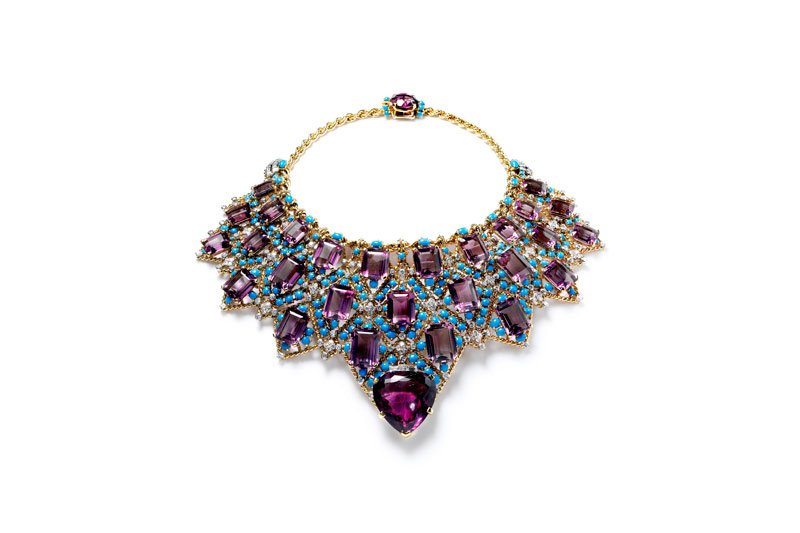All About Amethyst: The February Birthstone
The birthstone for February is the violet-colored quartz gemstone amethyst, and it is one that has a wonderfully colorful cultural history.
The Origins and Cultural Significance of Amethyst
The name amethyst stems from the Koine Greek dialect and is derived from the word “amethystos”, which can be translated as “not intoxicated.” According to legend, the ancient Greeks wore the gemstone and drank out of cups carved out of it to protect themselves from getting drunk. The stone became well-known for its healing, protective power, and during medieval times, European solders wore amulets made of amethyst to battle, believing that it would keep them calm and level-headed in heated confrontations. Amethyst is also important in Tibetan culture, as Tibetan Buddhists made prayer beads out of the stone.
The most well-known myth about how amethyst came to exist comes from a poem written by French author, Remy Belleau, titled L’Amethyste, ou les Amours de Bacchus et d’Amethyste – or, in English, Amethyst or the loves of Bacchus and Amethyste. In this poetic tale, Bacchus – the ancient Greek god of drunkenness, grapes, and wine (hence the term “bacchanalia”) – pursued a young beautiful maiden by the name of Amethyste. Wishing to remain celibate, Amethyste refused the advances of Bacchus and instead sent prayers to the gods for her desire to stay chaste. The goddess Diana, hearing her prayers, chose to turn Amethyste into a precious white stone which eventually changed to a purple color when Bacchus poured wine over the stone as an offering of his humility.
Noteworthy Amethyst Jewels
One of the most iconic pieces of jewelry to prominently display February’s birthstone is an Indian-inspired Cartier necklace commissioned in 1947 by the then infamous Duchess of Windsor, Wallis Simpson. The early statement piece featuring 27 step-cut amethysts, one larger heart-shaped amethyst, an array of turquoise beads, and several round brilliant cut diamonds set in gold. It was sold at Sotheby’s in Geneva in 1987 for approximately $605,000 USD.

The Duchess of Windsor’s Cartier amethyst necklace. Photo courtesy of Vogue Mexico.
The Properties and Hardness of Amethyst
In terms of color, the gemstone can generally range from a lighter lavender/violet/pinkish hue to a deep, dark purple, but a stone can also exhibit red and/or blue secondary hues. The finest varieties of amethyst can be found in Brazil, Siberia, Sri Lanka, and the Far East with the finest grade often being referred to as “Deep Siberian.” The gemstone is part of the quartz mineral family and its color is a result of irradiation, iron impurities, and the presence of trace elements resulting in complex crystal lattice substitutions. The richness and depth of the stone’s color is dependent on the arrangement, rather than the concentration, of transition elements like iron in its chemical makeup. Natural forms of amethyst also tend to be dichroic, which means they appear different colors when seen from different directions. They usually appear reddish-violet or bluish-violet, but when heated, they can turn into a more yellow or brown color and resemble citrine, another quartz gemstone.
As far as hardness goes, amethyst is the same as quartz: they both ring in at a 7 on the Mohs scale, but amethyst is slightly lower if the variety of the stone contains impurities. And in terms of setting the stone, with a hardness of 7, most setting styles will work, so prong set, bezel, semi-bezel, or channel all work to enhance how the amethyst looks in a piece of jewelry.
Thanks to Pantone’s “Ultra Violet” Color of the Year, there is likely to be a lot more amethyst jewelry on the market in 2018.







